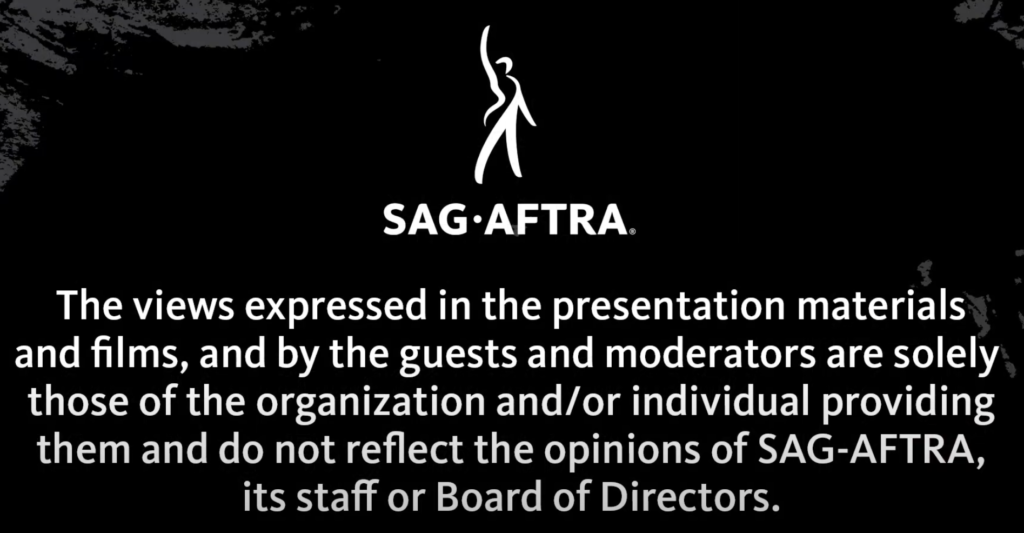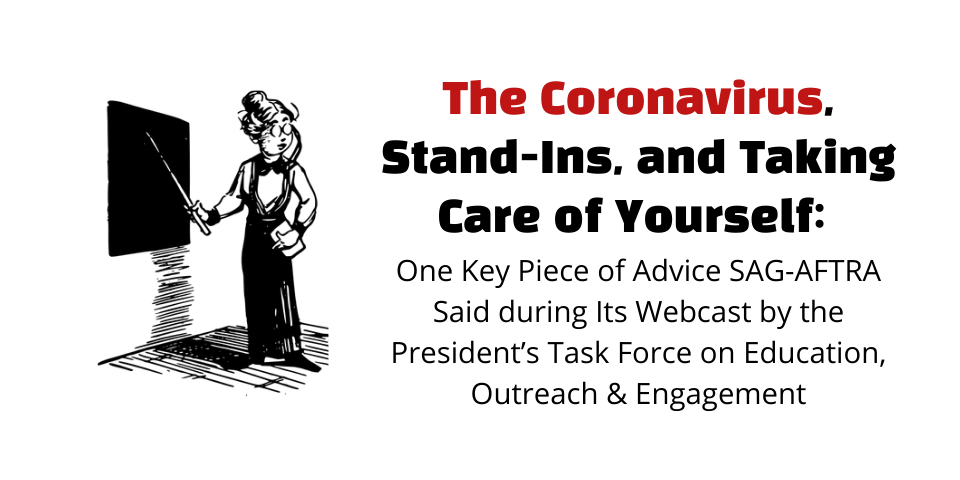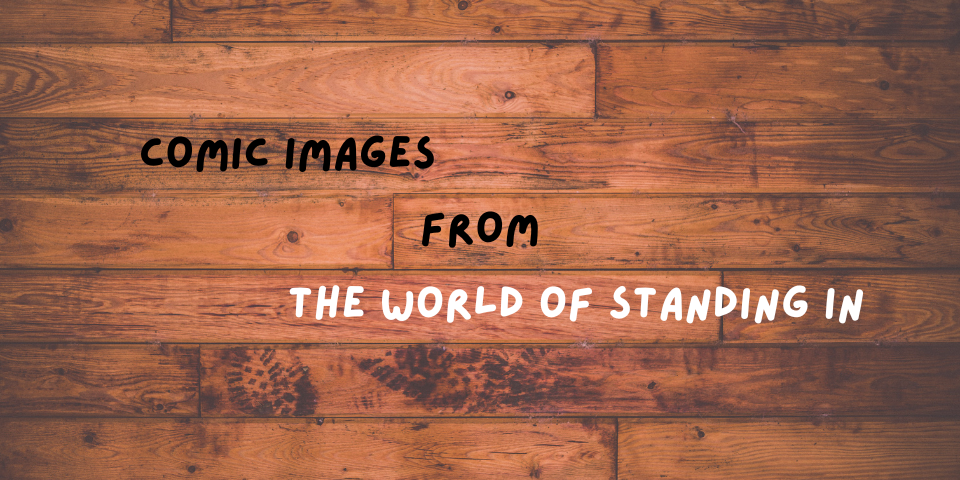This post is part of Stand-In Central’s deep-dive series into the coronavirus pandemic as it relates to stand-in work in TV and film. For more posts in the long-running series, visit https://standincentral.com/coronavirus.
— The Editor
On August 6, 2020, SAG-AFTRA hosted a webcast featuring the union’s President’s Task Force on Education, Outreach & Engagement. The title of the presentation was “Safety & Reopening: Getting Members Back to Work.”
Here is the replay on YouTube:
The webcast is largely redundant with respect to the material covered on Stand-In Central already with respect to the White Paper and The Safe Way Forward protocols, though it does provide here and there with some additional information and color.
That said, somewhat inexplicably, the video opens with the following disclaimer, which makes confusing whether the “views expressed” in the webcast reflect the opinions of SAG-AFTRA or not (confusing because they are SAG-AFTRA leaders and lawyers whose views arguably are the views of SAG-AFTRA).

Disclaimer in the webcast
One Key Piece of Advice for Keeping Safe at Work during Reopening
At 45:46 in the webcast, SAG-AFTRA vice president asks SAG-AFTRA chief operating officer and general counsel Duncan Crabtree-Ireland the question, “So if I arrive on set and the precautions are not as expected, what do I do?”
Crabtree-Ireland replies, “The first thing you should do is always watch out for your own safety and do what you feel keeps you safe.”
So, stand-ins, take note: Despite all of the protocols in place, don’t assume that they mean your workplace will be safe and its workers will behave safely, or that the protocols will be obediently observed at all times and as safe as can be.
Instead: Always look out for your own safety.
If you feel something is unsafe for you, don’t do it.
Additional Advice
Crabtree-Ireland continues: “You have a number of options when you get to a set and you feel like something is a concern, depending on how extreme of a concern you view it to be.”
He explains: “There should be a COVID compliance officer or COVID supervisor on set. You can always take your concerns directly to that individual.”
Crabtree-Ireland then provides an example of an unsafe or noncompliant situation of workers not wearing masks, or even a more “systemic” issue. Such a situation would warrant talking to the on-set COVID compliance officer or COVID supervisor.
In the event you feel uncomfortable talking to such a person, Crabtree-Ireland also mentions getting in touch with SAG-AFTRA, who can in turn talk to the production.
Anonymous Tip Hotlines
Crabtree-Ireland also mentions that “major producers” have anonymous tip hotlines you can call in the event of an unsafe work condition.
He does not say anything about those hotline numbers being provided to stand-ins or background actors in general, given that these SAG-AFTRA workers rarely receive safety bulletins and callsheets, especially in advance of the work day.
Conclusion
It’s very simple.
The next time you stand-in:
Don’t be a fool. Don’t assume that production is functioning at a level of being completely safe.
Instead, look out for your own safety.
Don’t be a follower. Be vigilant. Watch out.
Object to unsafe work conditions, or at least don’t do something that you believe to be unsafe for you to do.
The safety protocols on set are not by necessity going to cover all unsafe situations. While the safety protocols may mitigate risks when you are working, it may take your standing up for yourself to ensure you ultimately remain safe on set when you are standing in during the coronavirus pandemic.
And remember: SAG-AFTRA has not still not addressed lingering questions with respect to the unique situation stand-ins face in the return to work.
So while all of these protocols may aim to address the situation of on-camera performers and background actors, stand-ins have distinctly different needs that cannot be addressed by simply seeing stand-ins as “background actors” or even as “crew.” SAG-AFTRA doesn’t seem to have really paid attention to the unique needs of stand-ins, at least in any public or published way.
Thoughts? Post your in the comments section below!







Leave A Comment